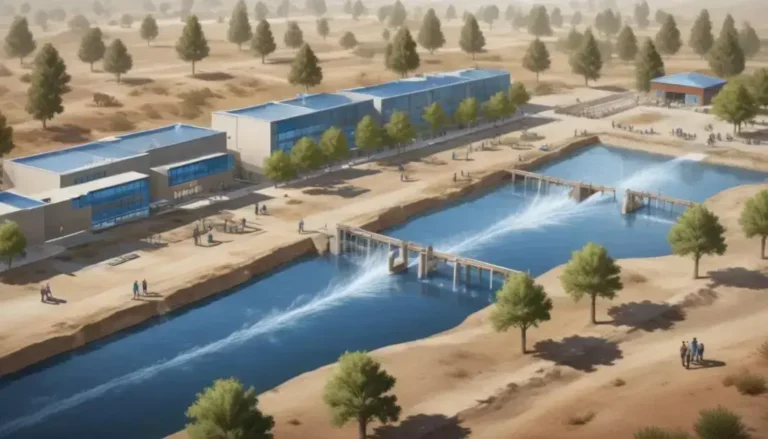Northern Lights project expands carbon capture capacity
Carbon capture is a vital technology that captures carbon dioxide emissions from industrial sources, helping to significantly reduce greenhouse gases and combat climate change effectively.
Carbon capture is making waves in the fight against climate change. The Northern Lights project is expanding, aiming to revolutionize how we store CO2.
Expansion of the Northern Lights project
The expansion of the Northern Lights project marks a significant milestone in the effort to combat climate change. This ambitious initiative focuses on carbon capture and storage, aiming to reduce greenhouse gas emissions dramatically. By utilizing advanced technology, the project is set to capture and store up to 1.5 million tons of CO2 annually, significantly contributing to global sustainability goals.
As part of the expansion, the project employs innovative techniques to transport captured CO2 from emission sources. This involves partnerships with industries that generate large volumes of carbon dioxide, ensuring that emissions are not only reduced but also effectively managed. The captured CO2 will be safely stored deep underground, away from the atmosphere, which is a crucial step in mitigating climate change effects.
Furthermore, the Northern Lights project is a beacon of collaboration. Various stakeholders, including governments, energy companies, and environmental organizations, are joining forces to bring this vision to reality. Their collective efforts emphasize the importance of shared responsibility in tackling climate challenges, setting a positive example for future projects worldwide.
Impact of carbon capture on emissions
The impact of carbon capture on emissions is profound and increasingly vital in our efforts to combat climate change. Carbon capture and storage (CCS) technologies are designed to capture carbon dioxide emitted from sources like power plants and industrial processes before it reaches the atmosphere. This technology plays a key role in reducing overall greenhouse gas emissions.
By implementing CCS, we can mitigate the effects of traditional energy production methods. These technologies can capture up to 90% of CO2 emissions from facilities, significantly cutting the carbon footprint of industries. The stored CO2 is then injected deep underground, ensuring it does not contribute to atmospheric warming.
Moreover, the deployment of CCS can also enhance sustainability practices across various sectors. It encourages industries to transition more swiftly towards renewable energy sources while managing their existing fossil fuel usage responsibly. Companies that invest in carbon capture technologies demonstrate a proactive approach to environmental stewardship, often gaining a competitive edge.
Commencing large-scale CCS initiatives not only reduces emissions but also supports economic growth through job creation in engineering, construction, and technology development. In essence, carbon capture is not only a crucial component of emission reduction strategies but also a catalyst for innovation and sustainable development across the globe.
In conclusion, carbon capture is essential for our future
Implementing carbon capture technologies is vital for reducing emissions and combating climate change. By capturing CO2 before it enters the atmosphere, we can lower the harmful effects of industrial processes.
This not only helps the environment but also drives innovation and supports economic growth. As industries shift towards more sustainable practices, they create new jobs and opportunities.
Investing in carbon capture can position companies as leaders in sustainability. By taking these steps, we can work together towards a cleaner, healthier planet for future generations.
Frequently Asked Questions
What is carbon capture and why is it important?
Carbon capture is a technology that captures carbon dioxide emissions from sources like power plants. It is important because it helps reduce greenhouse gas emissions and combat climate change.
How does the Northern Lights project contribute to carbon capture?
The Northern Lights project aims to capture and store up to 1.5 million tons of CO2 annually, making a significant contribution to reducing emissions globally.
What industries can benefit from carbon capture technology?
Industries such as energy, manufacturing, and cement production can benefit greatly from carbon capture by cutting their carbon emissions significantly.
What happens to the carbon dioxide after it is captured?
Once captured, carbon dioxide is transported and stored underground, preventing it from entering the atmosphere.
How can carbon capture support economic growth?
Carbon capture can create new job opportunities in engineering and technology fields, while also promoting sustainable business practices.
Is carbon capture a long-term solution for climate change?
Carbon capture is not a standalone solution but is part of a broader strategy that includes transitioning to renewable energy and improving energy efficiency to tackle climate change effectively.






